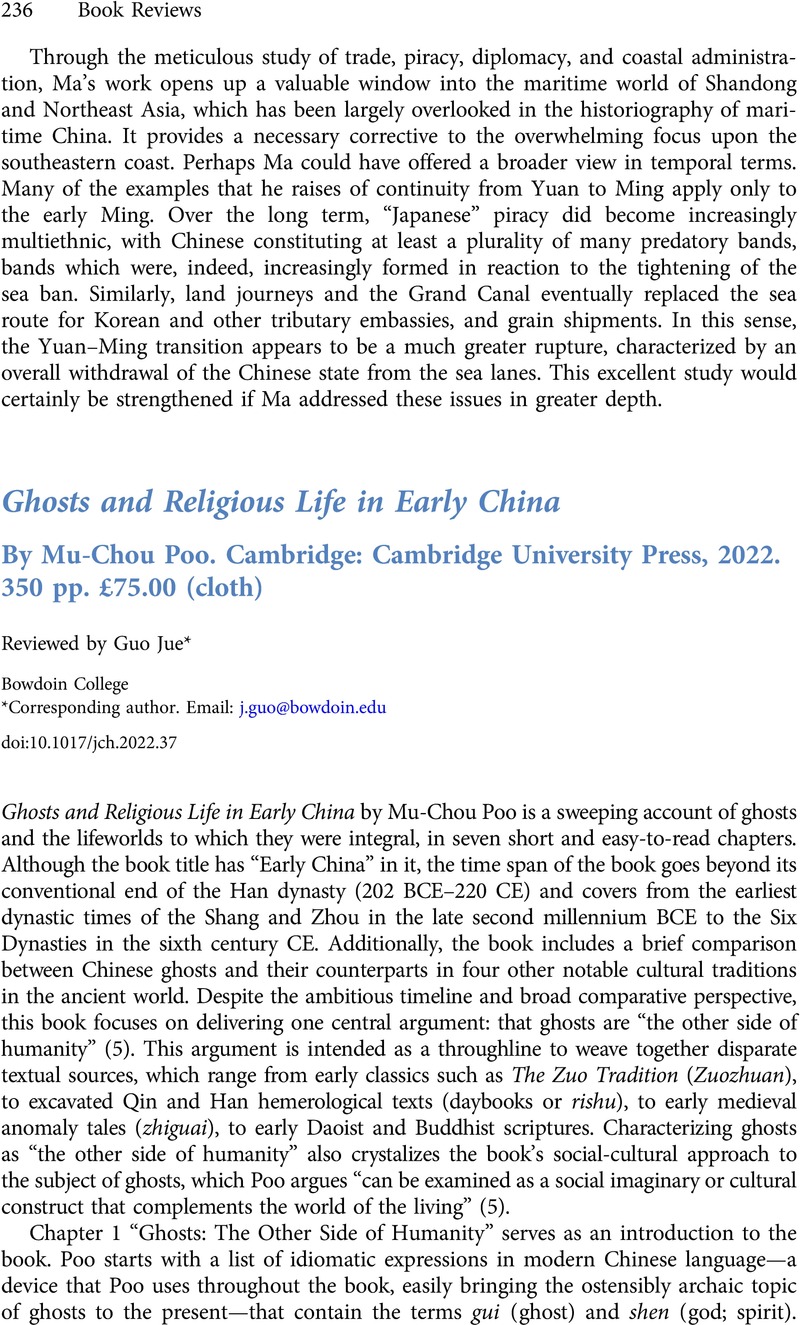No CrossRef data available.
Article contents
Ghosts and Religious Life in Early China By Mu-Chou Poo. Cambridge: Cambridge University Press, 2022. 350 pp. £75.00 (cloth)
Review products
Published online by Cambridge University Press: 03 October 2022
Abstract

- Type
- Book Review
- Information
- Copyright
- Copyright © The Author(s), 2022. Published by Cambridge University Press
References
1 See, for example, Minao, Hayashi, “Concerning the Inscription ‘May Sons and Grandsons Eternally Use This [Vessel],’” Artibus Asiae 53.1–2 (1993), 51–53; 55–58Google Scholar; Ping'an, Zhao, “Ai Cheng Shu ding ‘hehuo’ jie.” Zhongshan daxue xuebao no. 3 (1992), 129–30Google Scholar; Bowuguan, Luoyang, “Luoyang Ai Cheng Shu mu qingli jianbao,” Wenwu 1981.7, 65–67Google Scholar.
2 Hayashi, “Concerning the Inscription,” 57.
3 Qiu Xigui, “Hubei Jiangling Fenghuangshan shihao Hanmu chutu jiandu kaoshi,” Wenwu 1974.7, 49–63, here 54.
4 Qiu Xigui, “Hubei Jiangling Fenghuangshan shihao Hanmu chutu jiandu kaoshi,” 49.
5 For one comprehensive study of all the known examples up to 2018, see Jue, Guo, “Western Han Funerary Relocation Documents and the Making of the Dead in Early Imperial China.” Bamboo and Silk 2.1 (2019), 141–273CrossRefGoogle Scholar.
6 Guolong, Lai, Excavating the Afterlife: The Archaeology of Early Chinese Religion (Seattle: University of Washington Press, 2015)Google Scholar.



